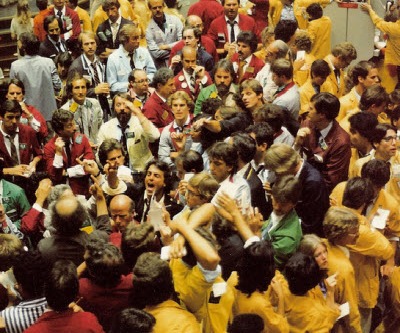Bears are ripping precious metals apart

Declines in the gold price after the Federal Reserve halted its economic stimulus program and struck an upbeat tone on the state of the US economy continued into Thursday.
In lunchtime trade on the Comex division of the New York Mercantile Exchange gold for December delivery was changing hands for $1,198.70 an ounce, down more than $26 or 2.1% from Wednesday’s close.
In morning trade gold touched a low of $1,195.50, the lowest since October 3 and only the second time below $1,200 this year. Selling was heavy with more than 17.6m ounces traded.
Given the fact that hedge fund and large investors have cut back on bearish bets over the last two weeks, the possibility of a short covering rally is remote.
That means more selling could be in the offing – next technical support is at $1,180 an ounce, a level the metal tested twice in 2013 before recovering.
SEE ALSO: Timeline of the gold price and the Fed’s rocky relationship
The Federal Reserve on Wednesday voted 9 to 1 to end the third round of its quantitative easing program known as QE3. The bank also signaled a much more hawkish stance towards interest rates explicitly stating that rates could be hiked earlier than “currently anticipated” should the economy improve at a faster rate.
The Fed hasn’t raised rates, which have been hovering near zero since QE1, since 2006.
Higher interest rates and bond yields raises the opportunity costs of holding gold as the metal is not income producing.
Sister metal silver fared even worse on the day with December futures dropping to a day low of $16.33, down 5% on the day and at levels last seen in February 2010. The low for the volatile metal that year was $14.64 an ounce.
The ratio between gold and silver has jumped higher reaching a five-and-a-half year high above 73, which could mean that silver is oversold or that the gold price has further to fall.
More News
{{ commodity.name }}
{{ post.title }}
{{ post.date }}




Comments
Dap Ingle
It’s risky trying to make money in something that is so manipulated and controlled